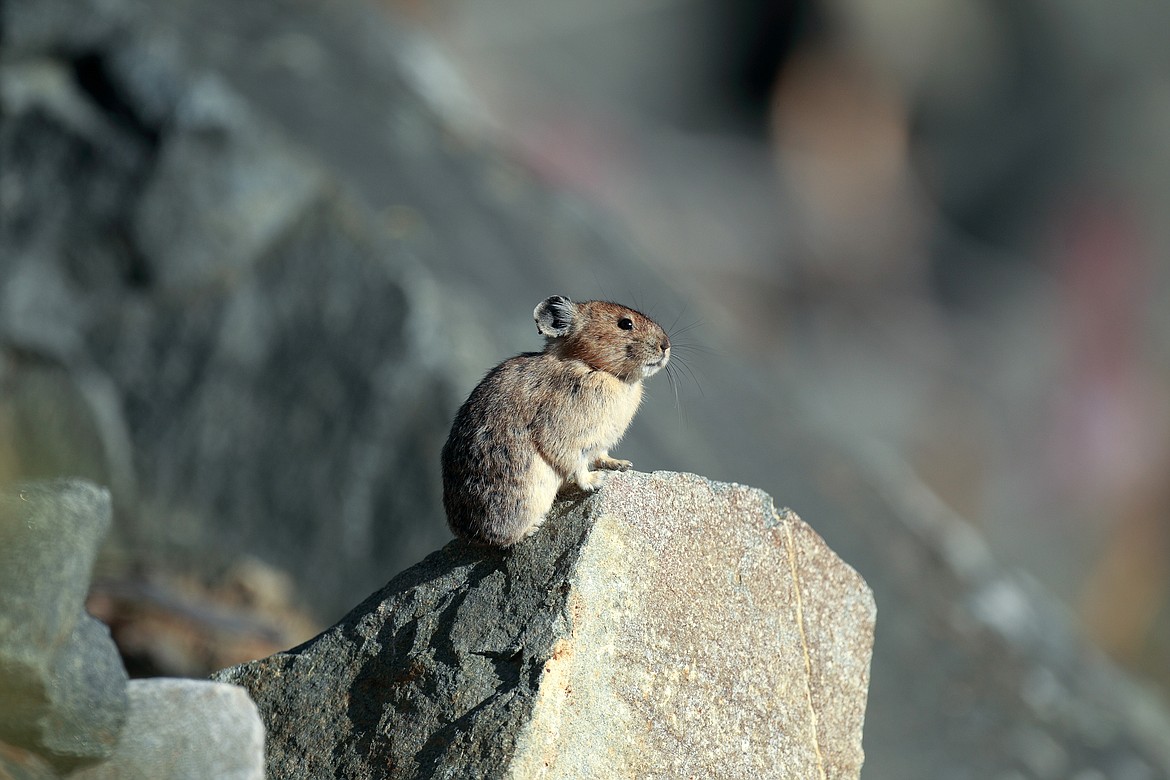Pikas: “Little Chief Hare” of the mountains
On top of a ridge in Canuck Basin (northeast Boundary County), I noticed a quick movement among the rocks. Then, I heard a squeak. At first, I thought it was a ground squirrel, but once it reappeared, I knew it wasn’t. Much to my delight, it was a pika. It is much more common to hear pikas than to see them due to their loud, peeping calls.
The American pika’s scientific name is Ochotona princeps. The generic name, Ochotona, is derived from the Mongolian word for pika, ochodona. The specific name, princeps, means “chief or prince” in Latin, referencing a Native American Word that translated to “Little Chief Hare.” The animal’s scientific name means “Chief pika.” They are also known in some areas as “rock rabbits,” “whistling hare,” or “coonies.”
Pikas are generally, small, compact animals. They have short ears and a tiny tail. Brown fur speckled with black covers their 6-to 8-inch long body. These small creatures live among the rocks of talus slopes at high elevations. Adults usually weigh about six ounces and can easily maneuver among the gaps in rock piles with their small bodies.
Pikas are commonly found in rock outcrops and talus slopes in high elevations above 5,000 feet. Pikas occur in this habitat throughout western North America from British Columbia to the southern end of the Great Basin, including the Sierra Nevada mountain range.
They find shelter in crevices to protect them from predators and the harsh conditions usually found in higher elevations. Pikas are very sensitive to extreme temperatures and use these crevices to escape both the heat of the summer and the cold of sub-zero winters, when substantial snow cover acts as insulation.
To prepare for winter, pikas spend the summer caching food, which includes various grasses, forbs, and leaves from shrubs. Prior to storing the gathered plants, they stack the fresh material on the surface to dry, in deposits known as hay piles. When the snow is deep, pikas can travel on top and eat whitebark pine branches normally six to 10 feet off the ground.
As mating season begins in the spring, the pikas are less territorial. During May, males and females coo to each other from neighboring territories to attract a mate.
Born blind and nearly hairless, young pikas are ready to leave their mother after four weeks. Juvenile pikas remain close to their birth site but establish their own territory. Even though pikas are territorial in regards to their food, they do work together when it comes to predators.
Pikas can spot predators quickly due to their sharp hearing, keen depth perception and wide field of vision. Predators include eagles, hawks, coyotes, lynx and bobcats. Upon spotting a predator, a pika sounds a high-pitched alarm which sends all nearby pikas diving for cover.
However, there are some predators that don’t instigate an alarm call: the long-tailed weasel, ermine and American marten. If a pika detects one of these predators, it stays silent not wanting to give away its position. Any noise may attract these small-sized predators who can easily pursue the pika among the rocks.
The squeak of a pika may give away its presence to us but trying to spot a pika the same color as boulders on a talus slope can require patience.
Pikas have hair on their feet to give them traction while scurrying over rocks. They generally live for 5-7 years in the wild.
Steve Jamsa, (who captured the pica photo) has been enjoying pika strategically from his tripod this last summer. Being good judges of character, they have graciously allowed his camera to peek into their lives. Thanks to Steve for sharing this rare photo.
Enjoy Boundary County and all its wildlife.

